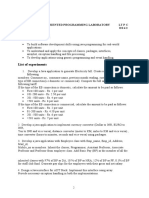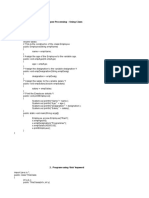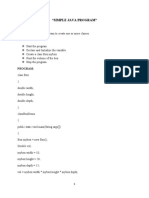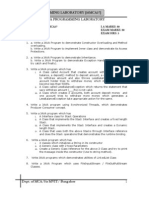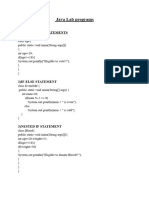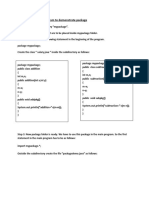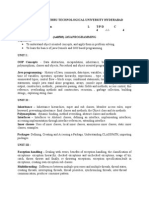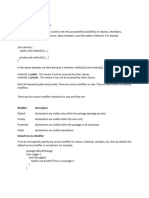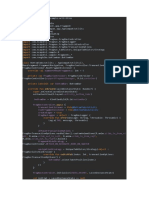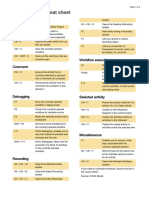0% found this document useful (0 votes)
79 views54 pagesMca - Java Program Final
This document provides instructions for 10 Java programming lab assignments for the first semester of an MCA program. The assignments include:
1. Developing a program to demonstrate a class with constructors.
2. Developing a program to demonstrate inheritance, interfaces, and packages.
3. Developing a program to implement exception handling and multi-threading.
4. Developing a program to read, write, and copy files using byte and character streams.
5. Developing a banking system using AWT and event handling.
6. Developing an employee details program using Swing.
7. Implementing TCP/IP and UDP protocols for message communication.
8. Developing a student information system
Uploaded by
VASANTHKUMAR SCopyright
© © All Rights Reserved
We take content rights seriously. If you suspect this is your content, claim it here.
Available Formats
Download as DOCX, PDF, TXT or read online on Scribd
0% found this document useful (0 votes)
79 views54 pagesMca - Java Program Final
This document provides instructions for 10 Java programming lab assignments for the first semester of an MCA program. The assignments include:
1. Developing a program to demonstrate a class with constructors.
2. Developing a program to demonstrate inheritance, interfaces, and packages.
3. Developing a program to implement exception handling and multi-threading.
4. Developing a program to read, write, and copy files using byte and character streams.
5. Developing a banking system using AWT and event handling.
6. Developing an employee details program using Swing.
7. Implementing TCP/IP and UDP protocols for message communication.
8. Developing a student information system
Uploaded by
VASANTHKUMAR SCopyright
© © All Rights Reserved
We take content rights seriously. If you suspect this is your content, claim it here.
Available Formats
Download as DOCX, PDF, TXT or read online on Scribd
/ 54




